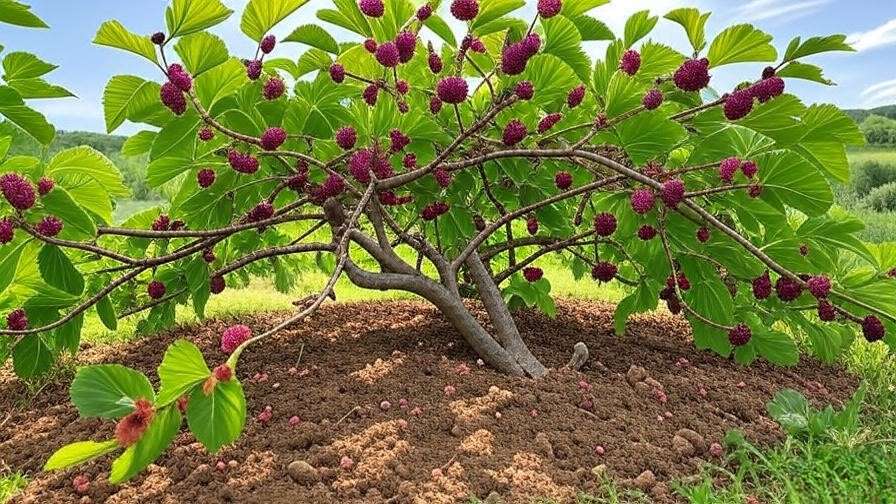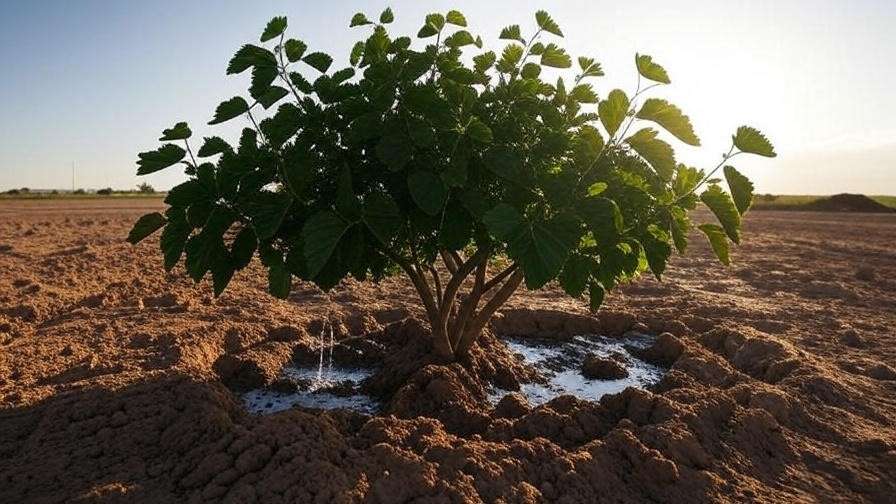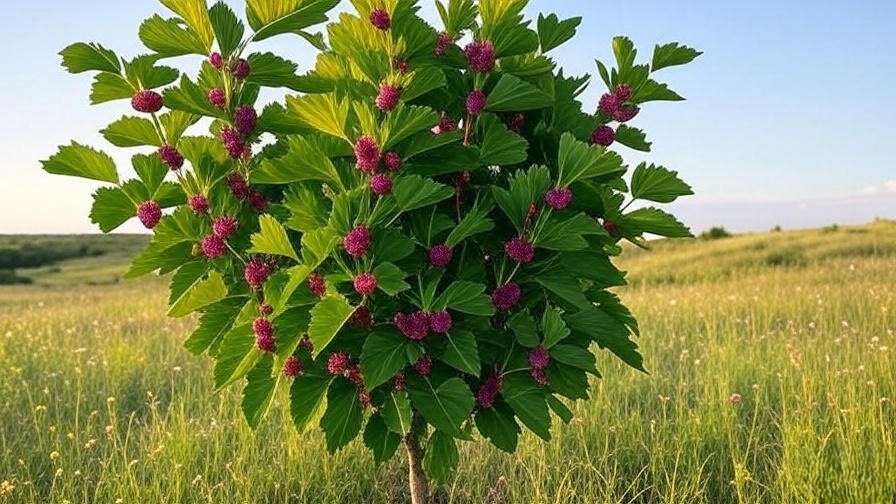Imagine stepping into your Texas backyard, shaded by a majestic mulberry tree, its branches heavy with sweet, juicy berries ready for picking. Growing a mulberry tree in Texas is not only achievable but also a rewarding way to enhance your landscape with shade, beauty, and delicious fruit. Whether you’re in the humid Coastal Plains or the arid West Texas plains, this guide unlocks the secrets to cultivating a thriving mulberry tree in Texas’s unique climate. Backed by decades of horticultural expertise and insights from Texas A&M AgriLife Extension, this comprehensive guide covers everything from planting to harvesting, ensuring your mulberry tree flourishes. Ready to transform your garden? Let’s dive in!
Why Choose a Mulberry Tree in Texas? 🌞
Benefits of Mulberry Trees for Texas Gardeners
Mulberry trees are a fantastic addition to Texas landscapes, offering a blend of practical and aesthetic benefits. Their juicy berries are packed with vitamins C, K, and antioxidants, making them a nutritious treat for you and your family. Beyond fruit, mulberry trees provide ample shade, perfect for cooling off during scorching Texas summers. They also attract wildlife, like birds and butterflies, adding vibrancy to your garden. According to Texas A&M AgriLife Extension, mulberries are well-suited to Texas’s diverse soils and climates, making them a low-maintenance choice for both novice and seasoned gardeners.
Popular Mulberry Varieties for Texas
Choosing the right variety is key to success. Here are the top mulberry varieties for Texas:
- Red Mulberry (Morus rubra): Native to Texas, this fruiting variety thrives in East Texas’s humid conditions and produces sweet, dark berries.
- White Mulberry (Morus alba): Known for its adaptability, this variety suits Central and South Texas, offering both fruiting and fruitless options.
- Fruitless Mulberry: Ideal for urban yards in cities like Austin or Dallas, where mess-free shade is preferred.
For the Blackland Prairies, opt for Red Mulberry, while White Mulberry excels in the Hill Country’s rocky soils.
| Variety | Fruiting | Drought Tolerance | Growth Rate | Best Texas Region |
|---|---|---|---|---|
| Red Mulberry | Yes | Moderate | Medium | East Texas |
| White Mulberry | Yes/No | High | Fast | Central/South Texas |
| Fruitless Mulberry | No | High | Fast | Urban Areas |
Expert Insight: Texas A&M research highlights White Mulberry’s resilience in alkaline soils, common in West Texas, making it a versatile choice.
Understanding Texas’s Climate for Mulberry Success 🌦️
Texas Climate Zones and Their Impact
Texas spans USDA Hardiness Zones 6b to 9b, presenting diverse growing conditions. North Texas (e.g., Dallas) faces occasional freezes, while South Texas (e.g., Houston) enjoys milder winters but intense humidity. Mulberry trees thrive in full sun and adapt well to these variations, but understanding your zone is crucial. For instance, in Zone 6b (Panhandle), choose cold-hardy varieties like Red Mulberry. In Zone 9b (South Texas), White Mulberry handles heat and humidity with ease. Long growing seasons across Texas allow for extended fruit production, but drought and heat require strategic care.
Soil Conditions in Texas for Mulberry Trees
Mulberries prefer well-draining loamy or sandy soils but can tolerate Texas’s varied soil types. East Texas’s clay-heavy soils need amending with compost to improve drainage, while West Texas’s alkaline soils benefit from organic matter to balance pH. A soil test, available through local extension services, reveals pH and nutrient levels. Aim for a pH of 6.0–7.0 for optimal growth. Expert Tip: Mix in aged manure or compost before planting to boost soil fertility, especially in nutrient-poor regions like the High Plains.

Planting Your Mulberry Tree in Texas 🌱
Choosing the Right Location
Mulberry trees need full sun (6–8 hours daily) to maximize fruit production and growth. Select a spot with ample space, as mature trees can reach 20–60 feet in height and spread. Avoid planting near structures, sidewalks, or driveways, as mulberry roots can be invasive, and falling fruit may cause staining. In urban areas like San Antonio, fruitless varieties minimize mess. Ensure the site has good drainage, as mulberries dislike waterlogged roots, a common issue in East Texas’s heavy rains.
Best Time to Plant
Plant in early spring (March–April) or fall (September–October) to allow roots to establish before extreme heat or cold. In Coastal Texas, fall planting leverages mild winters, while North Texas gardeners should opt for spring to avoid frost damage. Pro Tip: Check local weather forecasts to avoid planting during heatwaves or late freezes.
Step-by-Step Planting Guide
- Prepare the Site: Clear weeds and debris, and amend soil with compost or organic matter.
- Dig the Hole: Make it twice as wide and as deep as the root ball (typically 2–3 feet wide).
- Plant the Tree: Place the root ball level with the soil surface, backfill with soil, and tamp gently.
- Water Thoroughly: Soak the soil to settle roots, then apply 2–3 inches of mulch (e.g., wood chips) to retain moisture.
- Stake if Needed: Support young trees in windy areas like West Texas.
Example: A planting depth diagram can help visualize proper root placement, ensuring the tree’s crown sits just above soil level.

Essential Care Tips for a Thriving Mulberry Tree 🛠️
Watering Requirements
Young mulberry trees need deep, regular watering (1–2 inches weekly) for the first year to establish roots. Mature trees are drought-tolerant but benefit from supplemental irrigation during Texas’s dry summers, especially in regions like the Trans-Pecos. Water deeply every 7–10 days during drought, ensuring soil stays moist but not soggy. Use drip irrigation for efficiency, particularly in Central Texas’s rocky soils.

Fertilizing for Growth and Fruit Production
Apply a balanced 10-10-10 fertilizer in early spring to support growth and fruiting. For organic options, Texas A&M recommends composted manure or fish emulsion. Avoid over-fertilizing, which can lead to excessive foliage at the expense of fruit. Test soil annually to monitor nutrient levels, especially in nutrient-poor West Texas soils. Expert Insight: Over-fertilization is a common mistake; stick to one application annually for balanced growth.
Pruning for Health and Shape
Prune in late winter or early spring before new growth begins. Remove dead or crossing branches, shape the canopy for airflow, and control size for easier harvesting. Fruiting mulberries benefit from light pruning to encourage berry production, while fruitless varieties may need heavier trimming to maintain shape in urban yards. Tip: Create a pruning schedule:
- Year 1: Shape the young tree to establish a strong structure.
- Years 2–3: Thin crowded branches to improve light penetration.
- Mature Trees: Annual maintenance to remove deadwood and maintain size.
Managing Pests and Diseases in Texas 🐛
Common Pests Affecting Mulberry Trees
Mulberry trees in Texas can attract pests like scale insects, spider mites, and whiteflies, particularly in humid regions like East Texas. Scale insects appear as small, waxy bumps on branches, while spider mites cause stippling on leaves. Whiteflies, common in South Texas, leave a sticky residue. For control, use organic methods like neem oil or insecticidal soap, applied early in the morning for best results. Integrated pest management (IPM), recommended by Texas A&M AgriLife Extension, combines monitoring, cultural practices, and targeted treatments to minimize pest damage. Example: A Houston gardener successfully reduced scale infestations by applying neem oil weekly and improving tree airflow through pruning.
Diseases to Monitor
Mulberry trees may face diseases like powdery mildew, root rot, and bacterial blight. Powdery mildew, a white coating on leaves, thrives in humid Coastal Plains summers. Prevent it by ensuring good air circulation and avoiding overhead watering. Root rot, caused by overly wet soils, is a risk in clay-heavy East Texas; improve drainage with raised planting beds. Bacterial blight, marked by dark leaf spots, can be managed by removing affected branches and sanitizing tools. Expert Tip: Choose disease-resistant varieties like Morus alba ‘Kingan’ for humid or disease-prone areas. Regular sanitation, such as clearing fallen leaves, reduces disease risk.

Harvesting and Enjoying Mulberries in Texas 🍇
When and How to Harvest
Mulberries ripen from late spring to early summer (May–June) in most Texas regions. Ripe berries are soft, juicy, and dark purple or black for Red Mulberry, or reddish-white for White Mulberry. Hand-pick berries gently to avoid bruising, or spread a tarp under the tree and shake branches for larger harvests. Harvest every few days to catch peak ripeness. Store fresh mulberries in the refrigerator for up to a week or freeze them for long-term use. Pro Tip: Wear gloves to avoid staining hands, and pick in the morning for the sweetest flavor.
Creative Uses for Mulberries
Mulberries are versatile in the kitchen and beyond. Try these ideas:
- Culinary: Make mulberry jam, pies, smoothies, or add fresh berries to salads.
- Non-Culinary: Use berries for natural fabric dyes or as feed for backyard chickens.
- Ornamental: Mulberry trees enhance landscapes with their lush foliage and wildlife appeal.
Recipe Example: Texas Mulberry Jam
- Ingredients: 4 cups fresh mulberries, 3 cups sugar, 1 tbsp lemon juice, 1 packet pectin.
- Instructions: Crush mulberries, combine with sugar and lemon juice in a pot, boil until thickened, add pectin, and can in sterilized jars. Enjoy on toast or as a glaze for meats!
Troubleshooting Common Mulberry Tree Problems 🛑
Yellowing Leaves or Poor Growth
Yellowing leaves often signal nutrient deficiencies, overwatering, or poor drainage. In Texas’s clay soils, waterlogging is a common culprit; ensure proper drainage by amending soil or using raised beds. Conduct a soil test to check for deficiencies in nitrogen, iron, or magnesium, and apply a balanced fertilizer as needed. Solution: Adjust irrigation to keep soil moist but not soggy, and mulch to regulate soil moisture.
Fruit Drop or Low Yield
Premature fruit drop or poor yields can result from drought stress, inadequate pollination, or improper pruning. Ensure consistent watering during fruit development, especially in dry regions like West Texas. Encourage pollinators by planting native flowers like Texas bluebonnets nearby. Avoid heavy pruning during fruiting season, as it can reduce yields. Expert Insight: Texas horticulturists suggest selecting self-pollinating varieties like White Mulberry for consistent fruit production in areas with low pollinator activity.
Mulberry Trees and Texas Wildlife 🦋
Mulberry trees are a boon for Texas ecosystems, attracting birds like mockingbirds and cedar waxwings, as well as butterflies and bees. Their berries provide a vital food source, while their dense foliage offers nesting sites. However, over-foraging by birds or deer can reduce your harvest. Use netting or reflective tape to deter birds, and install fencing for deer in rural areas like the Hill Country. Fun Fact: Red Mulberry is a favorite of Texas’s state bird, the Northern Mockingbird, making it a wildlife-friendly addition to your garden.

FAQs About Growing Mulberry Trees in Texas ❓
Q1: Can mulberry trees survive Texas winters?
A: Yes, most mulberry varieties, especially Red Mulberry, are hardy in Texas’s USDA Zones 6b–9b. Protect young trees from rare North Texas freezes with burlap wraps.
Q2: How do I prevent staining from mulberry fruit?
A: Harvest with tarps to catch falling fruit, and plant fruiting varieties away from walkways or patios. Fruitless mulberries are ideal for mess-free urban yards.
Q3: Are fruitless mulberry trees better for urban Texas yards?
A: Yes, fruitless mulberries are low-maintenance and mess-free, perfect for cities like Dallas or Austin where staining is a concern.
Q4: What’s the fastest-growing mulberry variety for Texas?
A: White Mulberry (Morus alba) is the fastest-growing, often reaching 30–50 feet in a few years, ideal for quick shade in Central Texas.
Q5: How do I deal with invasive mulberry roots?
A: Plant at least 15–20 feet from structures, and use root barriers for fruiting varieties in small yards. Regular pruning controls root spread.
Conclusion and Next Steps 🌿
Growing a mulberry tree in Texas is a rewarding endeavor, offering shade, fruit, and ecological benefits tailored to the state’s diverse climates. By selecting the right variety, planting strategically, and following expert care tips, you can enjoy a thriving tree for years to come. Start your mulberry journey by visiting a local nursery or consulting Texas A&M AgriLife Extension for region-specific advice. Final Tip: Join Texas gardening communities on platforms like X to share tips and learn from fellow gardeners. Your vibrant mulberry tree awaits!













